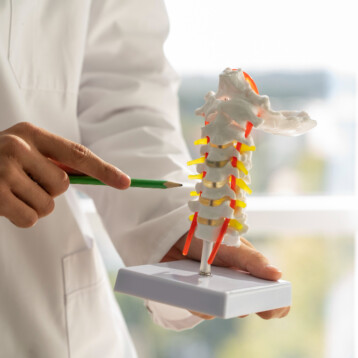
New treatments for sleep apnea are transforming the way this common sleep disorder is managed. With advancements in technology and medical care, innovative options such as adaptive CPAP devices, hypoglossal nerve stimulation, and minimally invasive surgeries offer patients more effective and comfortable solutions for improving sleep quality and overall health.
To further enhance patient care and expand your practice, consider integrating Vivos Technologies, a cutting-edge solution for sleep apnea treatment, into your offerings.
1. Adaptive CPAP Technology
Adaptive CPAP technology offers a major improvement in sleep apnea treatment by automatically adjusting pressure based on the patient’s breathing. This ensures greater comfort and better adherence compared to traditional CPAP devices. With personalized airflow and data tracking features, it enhances therapy effectiveness and allows for easier adjustments.
2. Hypoglossal Nerve Stimulation
Hypoglossal nerve stimulation is a cutting-edge, implantable treatment for moderate to severe obstructive sleep apnea, ideal for patients struggling with CPAP therapy. The device stimulates the hypoglossal nerve to keep the airway open by preventing tongue collapse during sleep. It offers a less invasive, more comfortable alternative to traditional surgeries.
3. Oral Appliances for Mild to Moderate Sleep Apnea
Oral appliances, often used for mild to moderate sleep apnea, are custom-fitted dental devices that help keep the airway open during sleep. These devices work by repositioning the lower jaw and tongue, preventing airway obstruction. They are an effective alternative for patients who cannot tolerate CPAP therapy. Oral appliances are portable, easy to use, and offer a non-invasive solution with minimal discomfort. Increasingly recommended by sleep specialists, these devices have shown significant improvement in sleep quality and daytime alertness for many users, making them a promising option for those seeking a simple, comfortable treatment.
4. Minimally Invasive Surgical Options
Minimally invasive surgeries offer effective solutions for patients with sleep apnea, especially when non-surgical treatments fail. Procedures such as soft palate implants (Pillar procedure) and radiofrequency ablation reduce tissue obstruction in the airway with minimal recovery time. Nasal valve surgeries, including septoplasty and turbinate reduction, are also options for improving airflow. These procedures target the structural causes of sleep apnea, offering long-term relief with fewer side effects compared to traditional surgeries like uvulopalatopharyngoplasty (UPPP). These less invasive options provide patients with new pathways to manage sleep apnea and enhance their quality of life.
5. Lifestyle Modifications and Emerging Therapies
Lifestyle modifications can complement medical treatments for sleep apnea, helping to reduce symptoms naturally. Weight loss, positional therapy (sleeping on one’s side), and regular exercise can significantly improve airway function. Avoiding alcohol and sedatives, which relax throat muscles, can also lessen airway collapse during sleep. Emerging therapies, such as myofunctional therapy (targeted tongue and throat exercises), are gaining attention for strengthening airway muscles. These holistic approaches, when combined with medical treatments, offer a comprehensive strategy for managing sleep apnea, improving overall health, and reducing the severity of sleep-disordered breathing.
The latest advancements in sleep apnea treatments, from adaptive CPAP technology to minimally invasive surgeries, offer patients more personalized and effective options. With innovations like hypoglossal nerve stimulation and oral appliances, along with lifestyle changes, individuals can better manage sleep apnea and significantly improve their quality of life.










